- Home
- Landscape drawing
- Drawing a boat
Drawing a Boat in Pencil: Make It Float
You’re standing on a dock, watching the boats sit low in the water - yet every time you draw one, it ends up hovering awkwardly on top of the lake.
Would you like to learn how to draw boats that look like they're floating in the water? You might not realize it, but it has a lot to do with reflections.
Step 1: Understanding Boat Types and Proportions
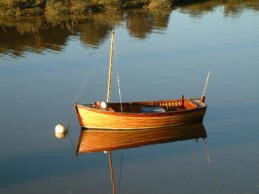 Boat on the River Tamar
Boat on the River TamarA boat built for a calm river looks very different from one meant to smash through ocean waves. If you don’t capture that difference, the whole drawing will feel a little 'off'.
Picture an iceberg. Most of it is hidden, right? A boat works the same way. You have to decide how much is submerged because the shape underneath, whether it's a deep ocean V or a flat river bottom, decides exactly where you draw the waterline.
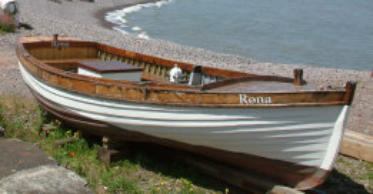 Small, sea going boats photographed in Somerset (Rona) and Whitby, Yorkshire
Small, sea going boats photographed in Somerset (Rona) and Whitby, Yorkshire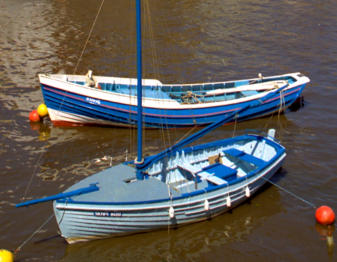
Step 2: Drawing a River Boat – A Simple Outline Exercise
To create a riverboat, start by drawing a guideline box in perspective. Follow these steps:
- Draw a Guideline Box – Sketch a rectangular box with a centre line marked at the front and back.
- Add the Boat’s Curves – Create the boat shape within the box, ensuring the bow is centred and the curves are balanced on each side.
Boat Drawing Perspective Guide
This technique ensures the boat’s perspective aligns with the horizon, helping you achieve symmetrical curves and proportions, as shown in the examples of river boats on a beach below.
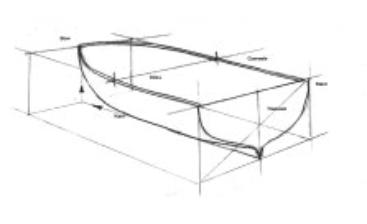
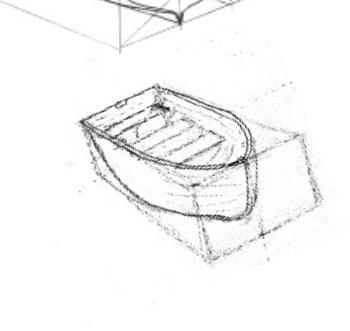
Step 3: Drawing a Coastal Boat – Mastering the Complex Curves
Coastal boats, with their V-shaped hulls and pronounced bows, require careful attention to detail. Simplify the process with this approach:

- Use the Figure-Eight Technique (below): Draw a flattened figure-eight shape on its side. This shape gives the hull a natural flow, with curves tapering towards the bow and stern.
- Adjust the Perspective: Decide on the boat's orientation. By tweaking the figure-eight, you can create a boat facing left, right, or straight ahead.
This technique is versatile and allows you to adapt the basic shape into multiple views by refining or erasing lines.
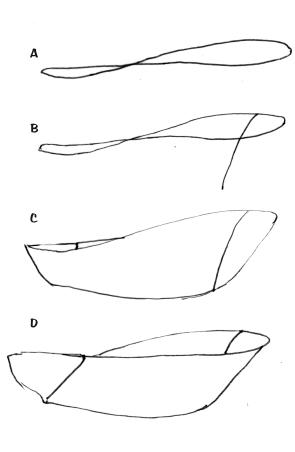
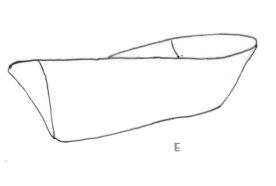
We start with the basic outline of the flat figure eight, as shown in Figure A. With practice, you'll find that most "eight" shapes will produce a suitable top outline for the boat hull.
Next, decide on the orientation of the bows and stern. In Figure B, the bows are positioned to the right.
Choose whether the boat faces towards you (Figure C) or away from you (Figure D). By strategically erasing and adding lines, you can create different views while maintaining accuracy.
To demonstrate this versatility, the same figure eight outline is used to create an alternative hull shape in Figure E, showing how this technique can be adapted to draw a boat facing a different direction.
Remember, the drawn figure eight shape is only a guide; feel free to deviate from it as you refine your drawing.
Your goal is to capture the difficult opposing curves along the top edges. Once you've added your finishing lines, erase any surplus drawn lines.
Step 4: Different Types Of Boats To Draw
Traditional clinker-built boats, such as "Rona" or those at Whitby, (photos at the top of this page) are distinguished by their overlapping wooden planks.
In contrast, modern boats are often made of glass-reinforced plastic (GRP) and moulded as a single piece.
When drawing these boats, reflect their construction:
- Clinker-Built Boats: Depict overlapping planks along the hull for a layered effect.
- Modern GRP Boats: Show a smooth exterior without visible planking.
Including these details adds realism to your drawing and conveys the boat's history and craftsmanship.
Step 5: Drawing a Boat in Water – Understanding Displacement and Reflections

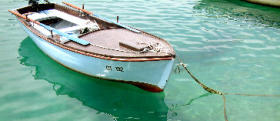
When drawing a boat in water, it's essential to convey the illusion of floating, rather than sitting on the surface.
This is achieved by incorporating displacement and reflections.
Understanding displacement
The way a boat sits in the water is affected by weight and balance.
Heavier objects, such as fishermen and their gear, create a more pronounced curve at the waterline, which appears differently from various angles.
- High Vantage Point – Results in a flatter waterline curve.
- Low Vantage Point – Creates a more pronounced, rounded curve.
Step 6: How To Draw Boat Reflections And Ripples In Water
Water reflections and ripples are essential to making your boat look like it’s truly part of the scene.
The Angle of View
When viewed from directly above, a still water surface reveals either the bottom or a mirrored reflection of the sky and surroundings.
As your viewpoint shifts to around 45 degrees, the water's depth gives way to its reflective surface.
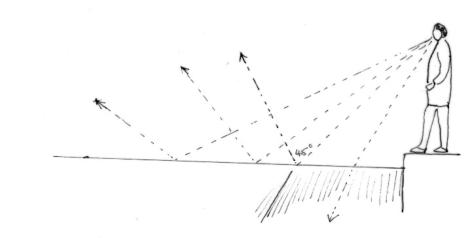 At around 45 degrees off-center, the view starts to merge and distort. It's not a hard cutoff, but a gradual blending.
At around 45 degrees off-center, the view starts to merge and distort. It's not a hard cutoff, but a gradual blending.Ripples and Their Effect on Reflections
The water's appearance shifts between light and dark as slight waves change the viewing angle.
Angles under 45 degrees produce a darker look, while those over 45 degrees make it appear lighter.
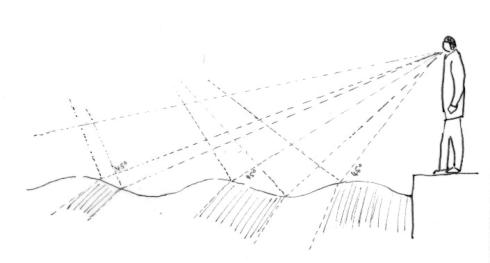
Quick Tip: To create realistic reflections, alternate light and dark areas to match the movement of the water.
The interplay creates the varied light and dark patterns on rippled water surfaces.
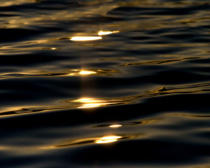
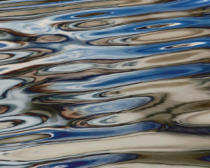
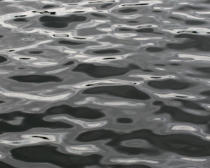
Step 7: Moving Reflections – Adjusting for Motion and Weather
When a boat is moving or affected by wind, reflections and water interaction change. Consider these factors:
- Boat Speed and Wake: A moving boat disrupts reflections, creating trailing waves and altering the water's texture.
- Weather Conditions: Calm waters produce clear reflections, while wind breaks up the surface and distorts the reflected image.
Practice drawing broken reflections to capture these real-world effects, particularly for moving boats or windy conditions.
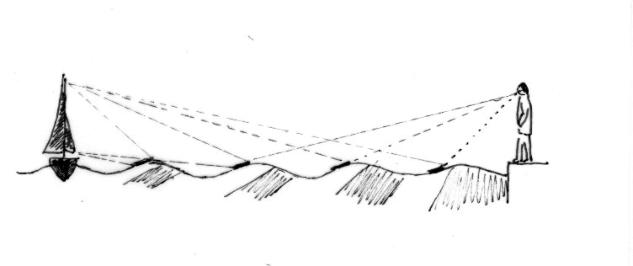
In theory, a reflected image should appear as a single, unbroken entity. However, in practice, the varied surface angles of the water often break up the image, resulting in a distorted reflection like the one on the right (below).
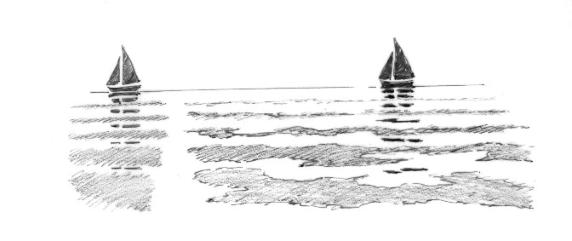
Things to Keep in Mind – Final Reflection Tips
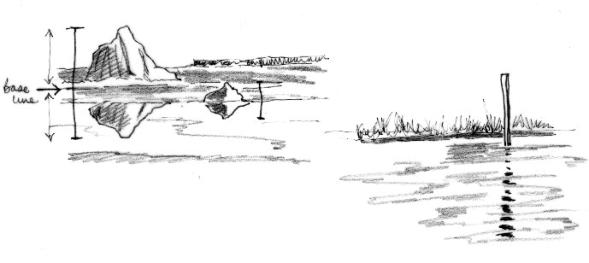
Reflections can be challenging, so here are some additional tips to consider:
Anchor Points: Measure reflections from the object's base for accuracy, ignoring the broken water edge.
Equal Distance Rule: Position the reflected image equidistant from the object's base, adjusting for ripples if necessary.
Wave Effects: Waves can stretch reflections by picking them up over a broader area, making them appear elongated.
Ready to Set Sail?
Congratulations on starting to draw realistic boats!
Begin with simple boat outlines and gradually build up to reflections and water effects.
With each sketch, you'll gain confidence and improve your skills.
Grab your pencil and start drawing – your dockside scene is waiting to take shape.
Quick Reference Guide:
- River Boats – Flatter shapes for calm water, drawn using a rectangular guideline box.
- Coastal Boats – V-shaped hulls for rough waters, shaped using a figure-eight technique.
- Clinker-Built Boats – Overlapping plank effect for historical accuracy.
- Water Reflections – Adjust angles for light/dark interplay and add ripples for realism.
- Moving Reflections – Account for wake and weather to depict motion.
Additional Resources
Learn to Paint Water: A Step-by-Step Guide with Expert Feedback
How to Draw a River Scene in coloured pencil - step by step walkthrough
Composing a canal scene with reflections
Annecy Reflections step-by-step with pastel pencils
Improve Your Pencil Art: Get Free Tips & Techniques
Sign up for our newsletter – just occasional emails packed with practical advice and inspiration for pencil artists like yourself






